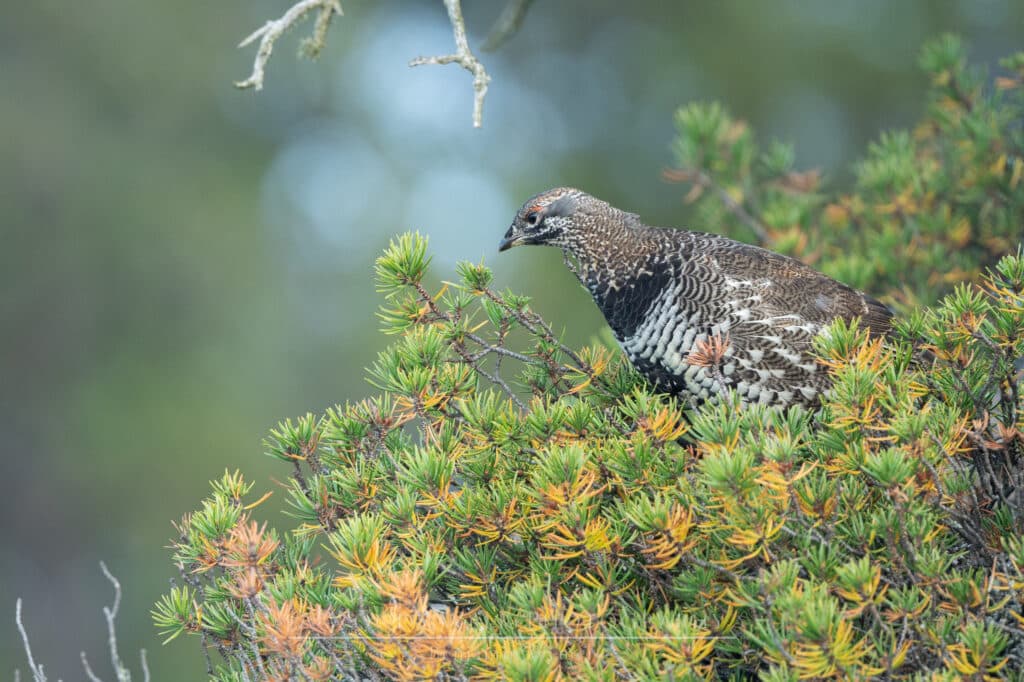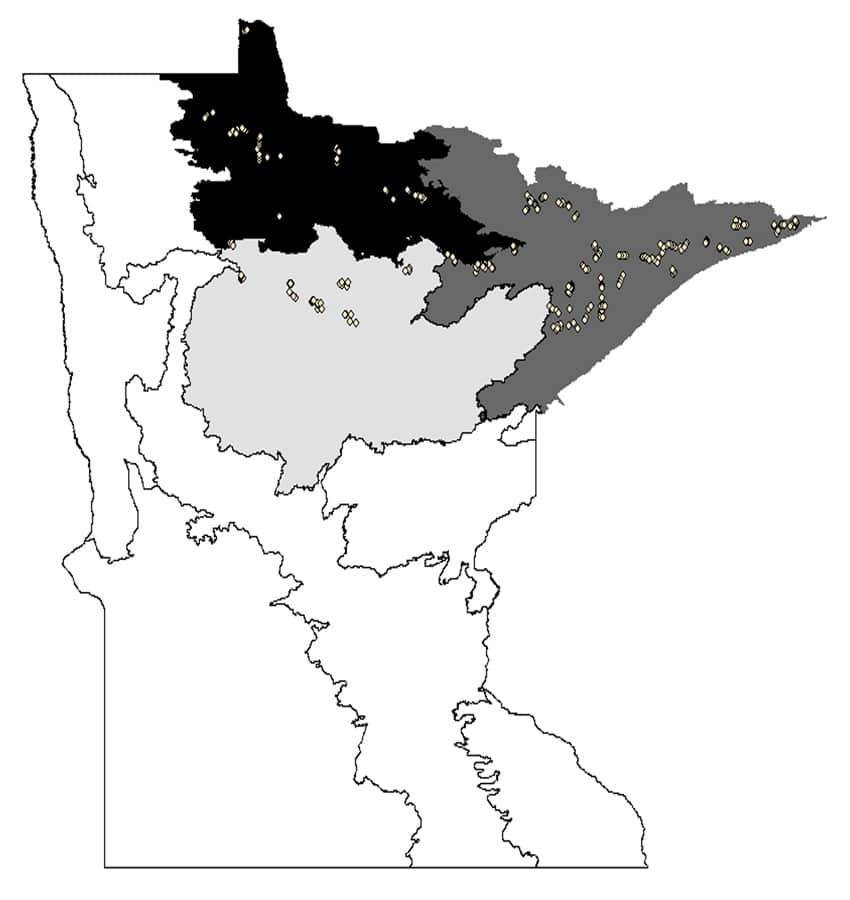
An iconic bird of the northwoods that has long been largely ignored by biologists is doing fairly well, a new report says. Spruce grouse are residents of northeastern Minnesota’s birch and evergreen forests, but little is known about their numbers, range, genetic diversity, and if those factors are changing.
The Minnesota Department of Natural Resources only began studying the state’s spruce grouse five years ago, previously stymied by difficulty assessing the bird’s population. Using some innovative techniques, agency scientists now say they have the beginnings of a baseline that can be monitored for increases or decreases in the years ahead. They were aided by the Chippewa National Forest, Grand Portage Band of Lake Superior Chippewa, Leech Lake Band of Ojibwe, Minnesota Department of Natural Resources, Red Lake Band of Chippewa Indians, Superior National Forest, 1854 Treaty Authority, Vermilion Community College, and citizen volunteers.
“Overall, the spruce grouse population appears to be reasonably stable in terms of our monitoring metrics and spatial extent (except possibly in the extreme southern part of their range in Minnesota),” wrote biologists Charlotte Roy and John Giudice.
New methods of measurement
Spruce grouse live up to their name by preferring spruce and birch forests, where they feed on buds and needles. They have also earned another name, “fool’s hen,” for their tendency to stay on a roost even as hunters or other humans approach.

The study depended on multiple new methods to measure the bird’s status. Living in dense forest, spruce grouse are hard to see, but also don’t drum or otherwise vocalize, like ruffed grouse or songbirds. So accurately estimating spruce grouse numbers took some creativity. The scientists discovered they could use the bird’s fecal pellets as evidence of abundance, and relied on feathers collected by hunters to sample DNA and determine how genetically connected the bird is across its range in Minnesota.
The scientists received feathers from 158 birds killed by hunters. Another challenge is that spruce grouse are not popular human prey because the meat often tastes like the spruce they consume. The good news is the population seems stable at this time, and is not being isolated into disconnected pockets with potential problems for genetic health.
Reduced range
But, the bird’s range is believed to have contracted in recent decades, shrinking in the south as spruce grouse habitat has been lost. While reports of spruce grouse in north-central Minnesota and even south of Duluth were frequent fifty years ago, that’s no longer the case.
“We don’t have any reports and didn’t get any tail feathers, from anywhere south of Duluth. About the farthest south was maybe the Leech Lake or Cass Lake areas,” Roy told the Duluth News Tribune.
To determine the population, scientists traveled set routes in late winter and early spring and walked circles at specific sites, counting up how many grouse pellets they could see. They found it gave a fairly accurate assessment of the spruce grouse population in that area. They say they believe the method should allow them to detect any decline in population more than 15 percent over 10 years. After five years of study, they say they have not seen a significant overall change in numbers.
More information:
- Northern Minnesota’s spruce grouse hanging in there – Duluth News Tribune
- 2023 Minnesota Spruce Grouse Survey (PDF) – MNDNR
- Spruce Grouse (Falcipennis canadensis) – MNDNR

